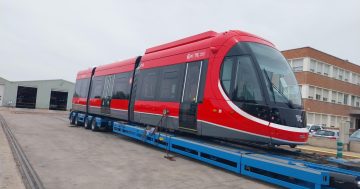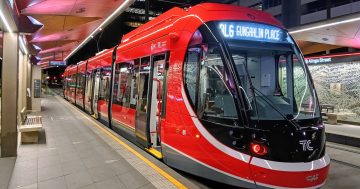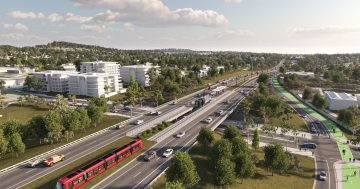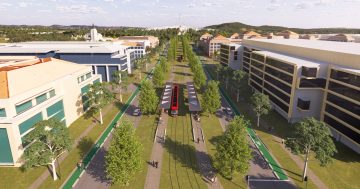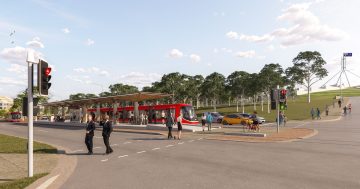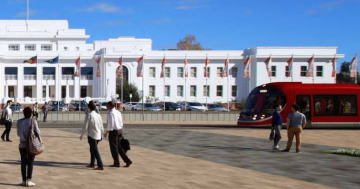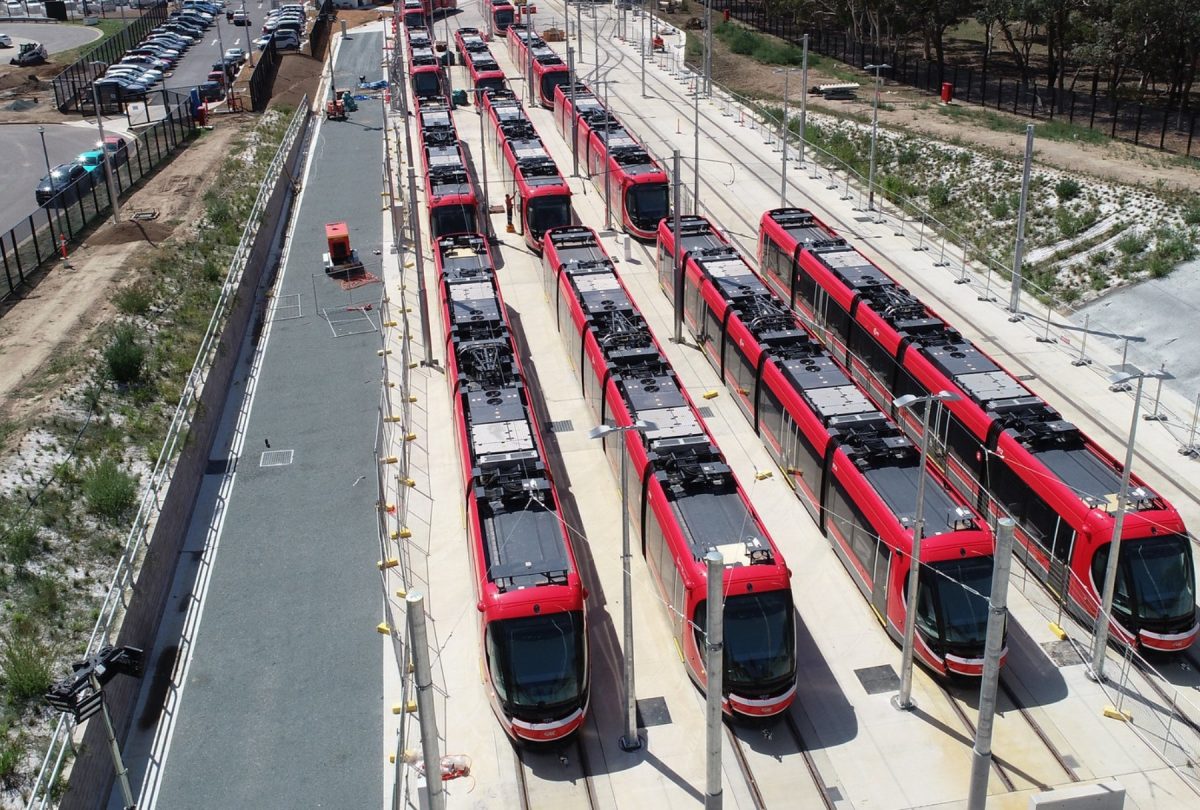
The 14 existing light-rail vehicles (LRVs) came ready to receive batteries. Photo: ACT Government.
The ACT Government has confirmed the city’s fleet of 14 light-rail vehicles (LRVs) won’t have to go back to the manufacturer in Spain to be retrofitted with batteries, but they’re slightly less certain how they’ll fare along the wire-free leg of the route between the city and Deakin.
The first of five new ‘wire-free’ battery-powered LRVs ordered by the government in 2022 left the Construcciones y Auxiliar de Ferrocarriles (CAF) factory on board a Norwegian cargo ship last week.
Once it arrives and passes a testing and commissioning process, it will take the place of an existing wired LRV while the entire fleet is progressively retrofitted with Onboard Energy Storage Systems (OESS) – aka, batteries – over several years.
The original $710 million contract with Canberra Metro to build Stage 1 from Gungahlin to Civic included 14 ‘Urbos’ low-floor LRVs from CAF in Spain, which were originally envisioned to run all future stages of light rail.
However, the National Capital Authority (NCA) requires the first leg of Stage 2B – from outside Commonwealth Park through to Adelaide Avenue – to be wire-free in a bid to preserve “heritage vistas” through the Parliamentary Triangle.
The new $577 million contract covers five new battery-powered LRVs, as well as retrofitting the existing ones and expanding the Mitchell depot to fit them.
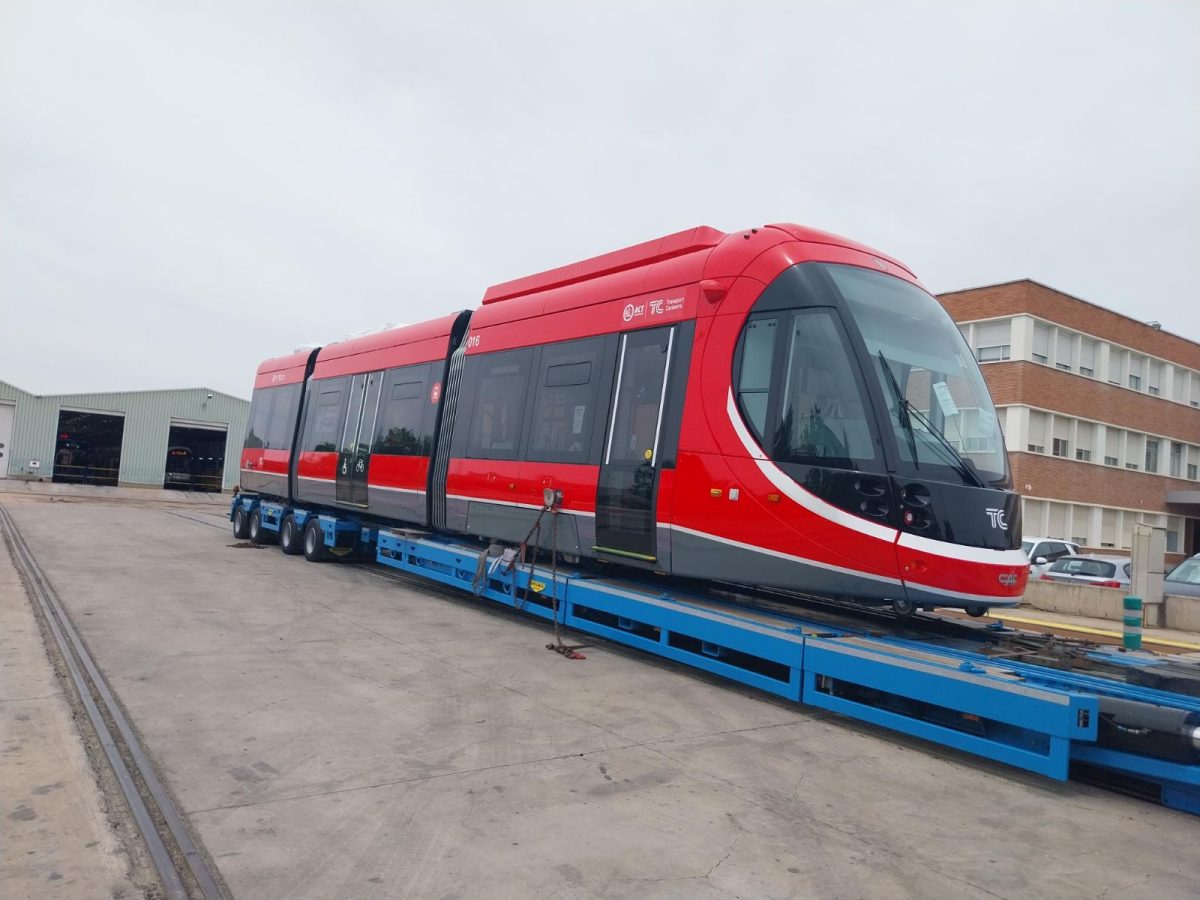
The first of five new battery-powered LRVs destined for Canberra over the coming years. Photo: Chris Steel, Facebook.
However, the ACT Government has yet to confirm the exact costs for Stage 2B, leading the Canberra Liberals to release their own estimates on the total cost of Stage 2A*. During a budget review committee inquiry in March, opposition leader Elizabeth Lee said it would be $1.46 billion, $149.7 million of which she said would need to be earmarked for the new LRVs, depot expansion and retrofitting process.
The government has confirmed with Region the true cost of the “Light Rail Vehicle Procurement, Retrofit and Depot Expansion Project” would be $129.6 million.
In response to another question on where this process will take place, the government spokesperson confirmed the current fleet will not have to go back to CAF in Spain for the retrofit, but the work will be carried out here in Canberra, at the upgraded Mitchell depot.
Each LRV will take two OESS units, and those for Stage 1 “were procured with a design allowance for the weight/loading of the OESS units”.
The LRVs will rely on battery power between Alinga Street and Commonwealth Park in Stage 2A, with charging to be provided by the overhead line between Alinga Street and Gungahlin.
However, how they’ll cope between Commonwealth Park and when the wires return on Adelaide Avenue is more of an unknown and “will depend on the specific attributes of the Stage 2B route”.
The government says how far the LRVs can travel on battery alone is “influenced by factors including how many stops there are along the route, delays at intersections, and the vertical gradient of the track, all of which require increased effort and therefore battery drain”.
“It is expected that LRVs would not need to be re-charged on their journey from Alinga Street until such time as they reach the Hopetoun Circuit on Adelaide Avenue. However, this will be definitively determined as the Stage 2B design is further developed,” the spokesperson said.
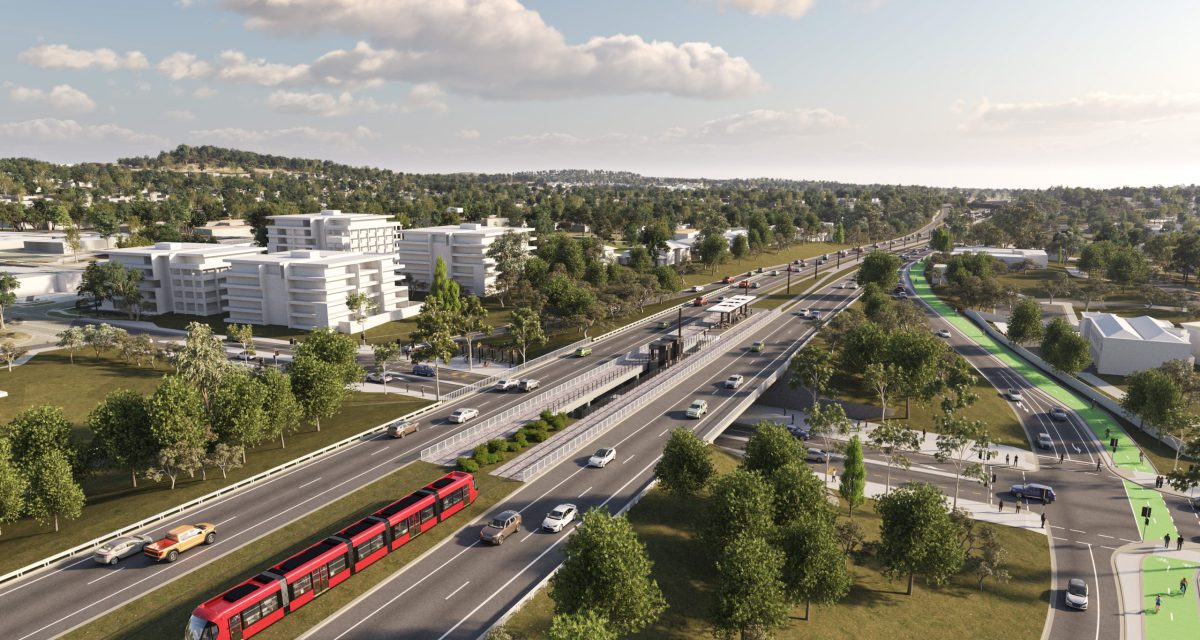
The wire-free section of the route runs from Alinga Street in Civic to Hopetoun Circuit under Adelaide Avenue. Image: ACT Government.
The preferred route travels down Commonwealth Avenue onto State Circle and past the front of Old Parliament House along King George Terrace on its way through Barton via Kings Avenue and Windsor Walk.
But the engineering challenge of getting the track to take the tight turn from Commonwealth Avenue onto State Circle has birthed an alternative ‘dog-leg’ route. This would take Sydney Avenue onto State Circle and then Adelaide Avenue.
But this, too, comes with heritage issues, and the government is still working through all the implications.
The first battery LRV is expected to be on track by early 2025.
*CORRECTION: This article previously implied the Canberra Liberals released estimates on Stage 2B. This has been corrected to read Stage 2A.












